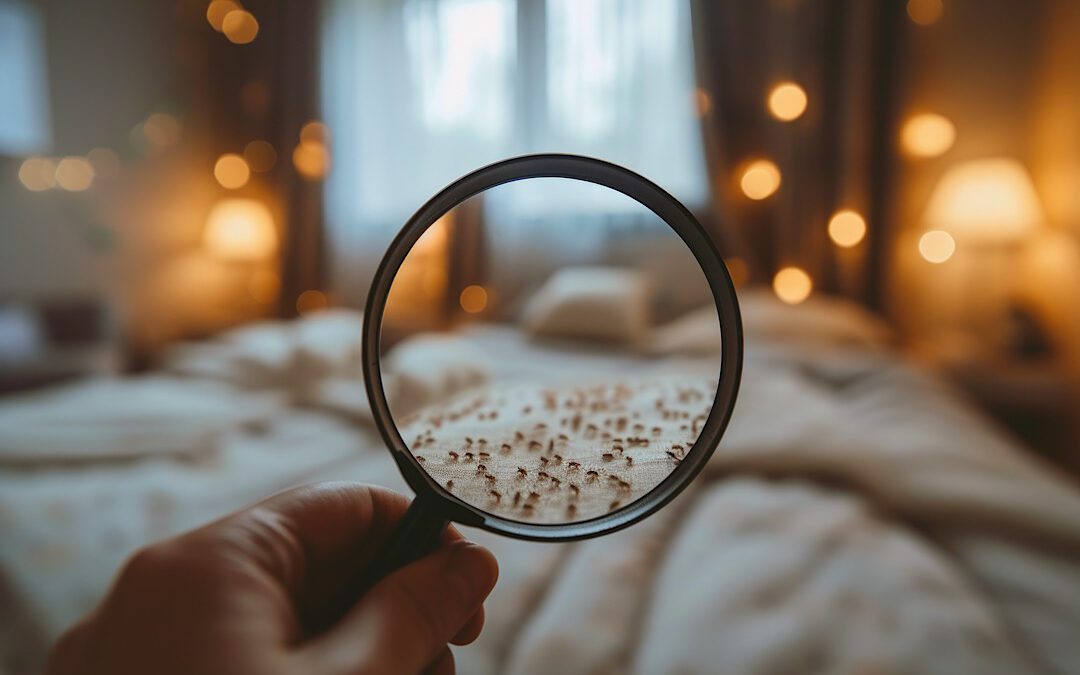Summer vacations offer rest, adventure, and cherished family time. But hidden in the seams of luggage or beneath hotel mattresses, an unwelcome hitchhiker can make its way home with you — the bed bug. These tiny, blood-feeding insects are notorious for their ability to spread via travel and infest homes with alarming speed. With bed bug sightings on the rise across the U.S., especially during peak travel months like June through August, homeowners must be extra vigilant in preventing infestations after returning from vacation. That’s where preventive bed bug solutions like Thermal Clean come into play, offering a reliable, heat-based treatment designed to eliminate bed bugs safely and effectively.
According to a 2023 report by Orkin, bed bugs are most commonly found in single-family homes, followed closely by apartments and hotels. As the summer travel season winds down, it becomes increasingly important for families to understand how to detect, treat, and most importantly, prevent bed bug problems before they become a health and financial burden.
This guide offers a practical, family-safe approach to preventing post-travel bed bug infestations — because coming home should always feel like coming home.
Why Bed Bugs Thrive After Travel
Bed bugs are expert hitchhikers. They are attracted to warmth, carbon dioxide, and the scent of humans. While they cannot fly or jump, they crawl quickly and hide easily in luggage, clothing, and upholstery. Hotels, vacation rentals, airports, and public transit are all common transmission points — and with Denver being a travel hub during summer, local families are at increased risk when they return.
Key Reasons Post-Travel Infestations Occur
Shared Sleeping Spaces
Hotels and short-term rentals host dozens to hundreds of guests each week. Even five-star accommodations can unknowingly harbor bed bugs.
Luggage and Personal Items
Suitcases, backpacks, and handbags placed near infected beds or carpets become ideal carriers.
Lack of Inspection
Most people don’t inspect hotel rooms or belongings during or after travel, allowing bed bugs to remain unnoticed.
Quick Unpacking
Bringing bags directly into bedrooms or living areas can immediately introduce bed bugs to bedding, furniture, and carpets.
According to the National Pest Management Association, one in five Americans has either encountered a bed bug or knows someone who has. With such high odds, preventing infestation begins with awareness and proactive action the moment you return home.
Step-by-Step Guide to Preventing Bed Bugs After Travel
Returning home from a trip should be relaxing, not stressful. These post-travel bed bug prevention tips are safe for families and effective at stopping infestations before they start.
Before You Enter the House
Inspect Your Luggage Outside or in the Garage
Open all bags in a well-lit area before bringing them indoors. Use a flashlight to check corners, zippers, and seams for signs of bed bugs (tiny reddish-brown bugs, black fecal spots, shed skins, or eggs).
Leave Shoes and Bags in a Designated Area
Avoid taking suitcases directly to your bedroom or carpeted areas. Instead, use the laundry room or a hard surface like tile or concrete.
Vacuum Suitcases Immediately
Use a vacuum with a crevice tool to remove potential bugs or eggs from bags. Empty the vacuum canister outside, into a sealed trash bag.
Safely Handling Clothing and Laundry
Wash All Clothes in Hot Water Immediately
Even clothes that weren’t worn should be laundered. Use the hottest water and drying cycle recommended for the fabric, as heat is one of the few effective ways to kill all bed bug life stages.
Dry on High Heat for at Least 30 Minutes
Drying is critical. Bed bugs can survive cold washes, but are unable to survive temperatures above 120°F for sustained periods.
Use Sealed Plastic Bags for Dirty Laundry
While traveling, keep worn clothes in a sealed plastic bag to limit exposure. Once home, empty the bag directly into the washer.
Clean and Treat Personal Belongings
Heat Treat Non-Washable Items
Items like shoes, books, and electronics can be placed in heat chambers or left in a sealed car parked in direct sunlight on a hot day. Internal temperatures must reach at least 125°F for 60 minutes for effectiveness.
Avoid Over-the-Counter Sprays
Many bed bug sprays available at hardware stores are ineffective or potentially unsafe for children and pets. If an infestation is suspected, always consult a licensed pest control professional.
Use Protective Luggage Covers Next Time
Encasing suitcases in bed bug-proof covers during travel makes it easier to inspect and prevents bugs from hiding in the lining materials.
Spotting Bed Bug Symptoms Early
Early detection is key to stopping a minor exposure from becoming a full-scale infestation. Bed bugs reproduce rapidly — a single female can lay 200–500 eggs in her lifetime. The sooner you identify signs, the more manageable the response.
Signs of a Bed Bug Problem
- Small red bites in a line or cluster, often appearing overnight on arms, legs, or back
- Rust-colored or dark spots on sheets or pillowcases (excrement or blood)
- Shed skins and egg casings in mattress seams or around bed frames
- A sweet, musty odor, especially in enclosed rooms or closets
If you spot any of these symptoms within two to three weeks after travel, call a pest professional to inspect and confirm the presence of bed bugs. Avoid moving beds or furniture before treatment to prevent spreading them further.
Professional Bed Bug Treatment Options
DIY solutions are rarely effective once bed bugs take hold. The most reliable solution, especially for family homes, is professional treatment with licensed pest control providers.
Effective Professional Methods
Heat Treatment (Thermal Remediation)
This method raises room temperatures to 130–140°F, killing all bed bug stages in one visit. It’s non-toxic, safe for families and pets, and does not require multiple applications.
Targeted Chemical Treatments
Insecticides are applied strategically in cracks, crevices, and mattress edges. This method may require repeat visits but is effective when performed by trained technicians.
Integrated Pest Management (IPM)
Combining inspection, monitoring, education, and treatment, IPM offers long-term prevention and customized solutions.
Choosing the right treatment depends on the severity of infestation, home size, and the needs of your family. Many professionals offer family-safe and environmentally friendly options that won’t compromise your health or comfort.
Family-Safe Tips to Prevent Future Bed Bug Exposure
Once you’ve dealt with a potential exposure, the next step is long-term prevention — especially if travel is frequent.
What You Can Do Going Forward
- Inspect hotel mattresses and headboards before unpacking
Look for black spots, shells, or live insects around seams and box springs. - Store luggage on racks, not beds or floors
Preferably keep it in the bathroom or on a hard surface. - Use bed bug-proof luggage liners or encasements
These minimize contact and make it easier to spot intrusions. - Be cautious with secondhand furniture or clothing
Always inspect and, if possible, heat-treat before bringing them into the home. - Educate the whole family
Teach kids and teens to recognize signs of bed bugs and to store backpacks and clothes responsibly after trips or overnight stays.
Create a Safe, Comfortable Return from Travel
No one wants their family’s vacation memories marred by a stressful infestation. By taking thoughtful, proactive steps immediately after travel, homeowners in Denver and across the country can avoid the rising threat of bed bugs. Protecting your space starts with vigilance, proper sanitation, and knowing when to turn to a professional like Thermal Clean.
Coming home should be a joy — not a reason to worry. With these post-travel bed bug prevention strategies, you’ll ensure that the only souvenirs you bring home from vacation are the ones you intended.

